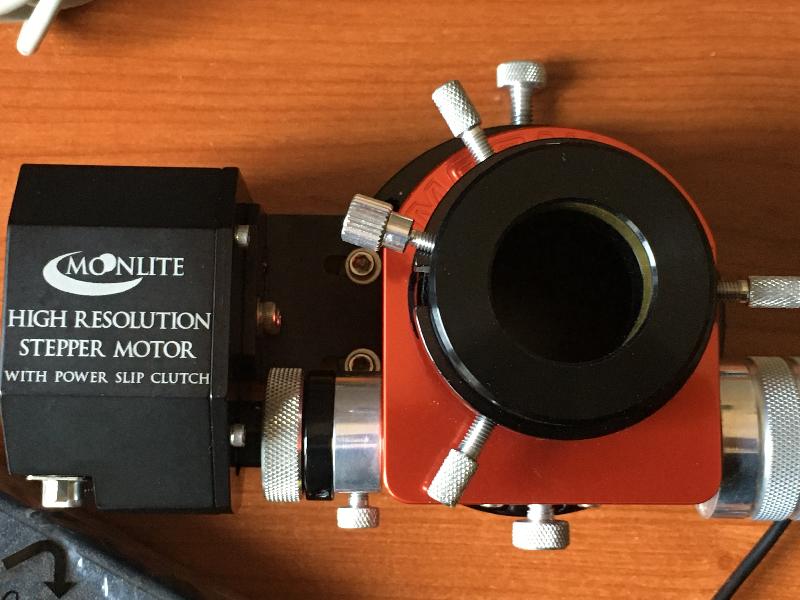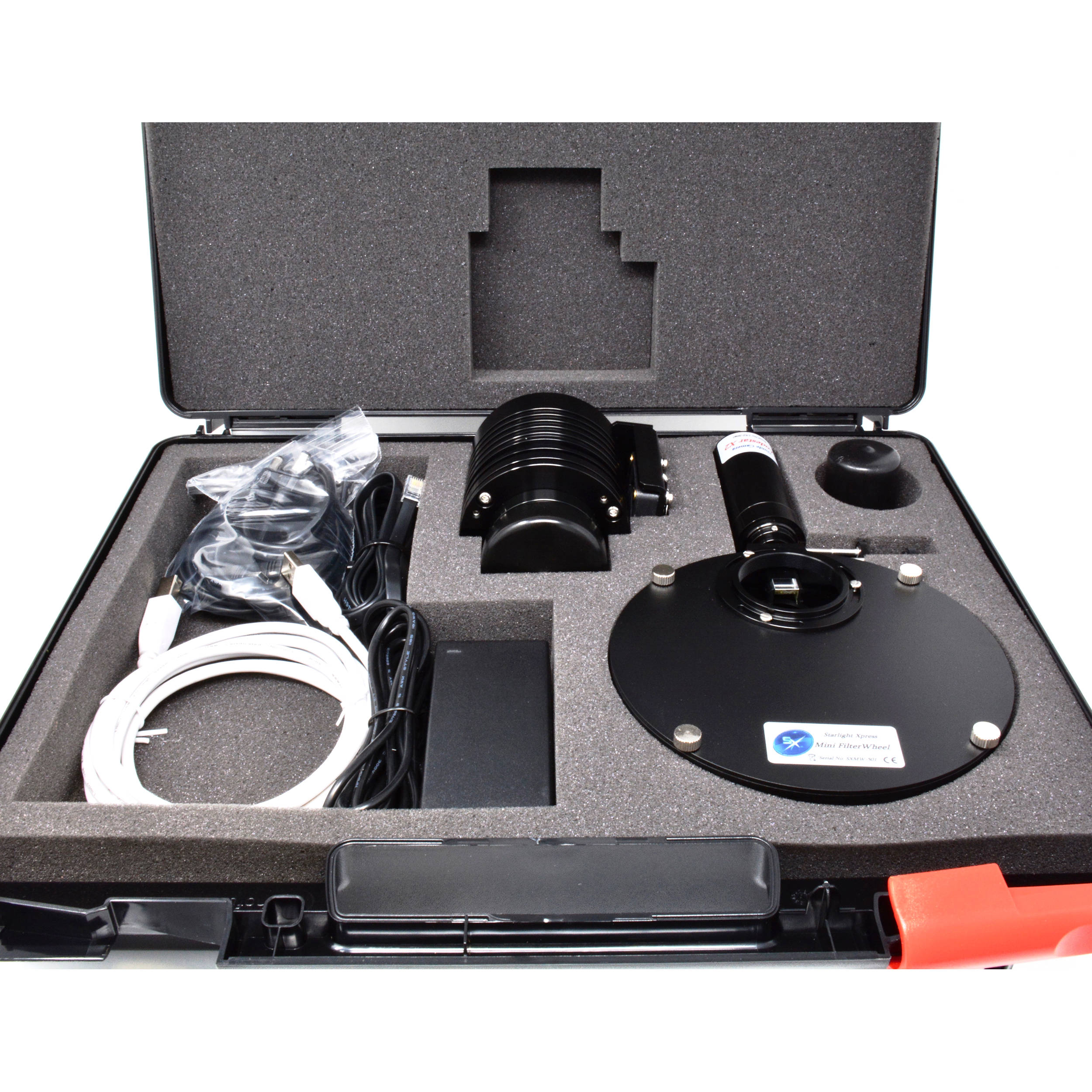The SX driver is found in ‘Device Manager’ and is separate from the MaximDL plug-in 5.29 that you refer to. If you plug in the camera and look at the details of the Universal Serial Bus device ‘Starlight Xpress CCD’, you will see the Driver under one of the tabs. Starlight Instruments provides all kinds of equipment and accessories for telescopes, including digital focusers, micro touch focusing systems, telescope tube adapters plus many other items. The Starlight Xpress CoStar CMOS Autoguider is as small as a 1.25-inch eyepiece and weighs much less! Works very well as a guider camera. It doesn't need to connect through an SXV camera, but requires power via USB and must be plugged into a computer for guide-corrections to be calculated. Starlight Xpress CoStar CMOS Autoguider Features.

2. Camera connection pane: unbinned pixel size. If you said 'yes' to the connection prompt, this information will usually be filled in automatically and the control will be disabled. If you said 'no' or if the device doesn't report its pixel-size, you'll need to enter the value by hand. You should be able to get the unbinned pixel size from the camera spec sheet or the manufacturer's web site. If the pixels aren't square, just specify the larger dimension or the average value if you prefer. This won't have any effect on your actual guidng results, but it will allow PHD2 to know the image-scale for your set-up. This is used for setting baseline guiding parameters, doing sanity-checks on calibrations, reporting guiding performance, and getting support on our forum..
3. Camera connection pane: binning level. If your guide camera supports binning (many do not), you can specify what level of binning you want to use for this equipment profile. If you want to use the same equipment set-up with different binning levels, it's best to create separate profiles for each binning value. If your guide camera has very small pixels and you have also specified a long focal length, you may see a 'warning' icon next to the Pixel Scale field. That is telling you that the specified image scale is probably too small and you should bin the camera if possible.
4. Camera connection pane: guide scope focal length. This seems to be a common place for mistakes, so it's worth being careful and getting it right. The correct value is not the aperture of the guide scope, it is the focal length. So, for example, if you're guiding with a 50mm finder scope, the focal length willl not be 50mm - it will probably be something closer to 150-175mm. A 60-80mm refractor guide scope will probably have a focal length in the range of 240-500mm, not 60-80mm. Similarly, if you're guidng with an OAG on your main imaging scope, the focal length will be that of the main scope. In some cases, you may be using a small threaded focal reducer on the guide camera, so that must also be taken into account. Like the pixel-size entry, the focal length doesn't demand a great deal of precision, but you should get as close as you can. Otherwise, the performance numbers may not reflect your actual results and the baseline guiding parameters may be sub-optimal.
5. Mount connection pane: mount guide speed. This is another area that seems to cause confusion. The guide speed is a parameter set in the mount or in themount driver, it's not something controlled by PHD2. PHD2 never sets the mount guide speed, it only reads it. It is usually expressed as a multiple of the sidereal rate and is typically in the range of 0.5x - 1x sidereal. Despite what you may read elsewhere, it's usually best to use guide speeds in this range rather than much lower speeds. Higher guide speeds can help to clear backlash more quickly and may help to overcome stiction problems. If you say 'yes' to the connection option prompt, PHD2 will attempt to read the current guide speed from the mount. If this fails for some reason, you'll need to enter the guide speed manually. PHD2 uses this value to automatically set the calibration step-size and to aid in checking calibration results; but the guide speed information is not important for the actual guiding. If you're using different guide speeds on the RA and Dec axes, enter the larger value. If you really can't determine what the guide speed settings are in the mount, leave the setting at the default value of 0.5X. This pane also has a checkbox regarding the presence of high-precision encoders in the mount. These devices are somewhat rare but are sometimes included on expensive, high-precision mounts, and you are likely to know if you have them. Most users will leave this box unchecked.
I was lucky enough that Terry from StarlightXpress sent me a Lodestar X2 for me to test to see how well it performed against my existing guider camera, so it only seemed fair that I provide my feedback via an equipment review. Many who know me know I have been using a QHY5L-II camera as a guide camera for a few years now but after seeing a few of my fellow astrophotographers using the Lodestar cameras it seemed silly not to try one out.

In comparison to the QHY5L-II the Lodestar X2 is a true CCD camera and not a CMOS camera, so immediately this would yield some higher sensitivity in what stars can be selected. One thing that is immediately noticable between the cameras is the Lodestar X2 is longer than the length of the QHY5L-II.
Just to add some more comparisons:
| QHY5L-II | Lodestar X2 | |
| Sensor | Aptima MT9M034 | Sony ICX829 |
| Sensor Type | CMOS | CCD |
| Sensor Size | 6.66mmx5.32mm | 6.47mmx4.81mm |
| Pixel Size | 3.75um | 8.2umx8.4um |
| MPX | 1.2mpx | 0.4mpx |
| QE | 74% | 77% |
| Length | 54mm | 85mm |
| Weight | 45g | 50g |
| Cost (27 Aug 2019) | £175 | £378 |
The first time I used the Lodestar X2, I was shocked at how many stars were in the field of view, for the same 2 second exposure I usually guide at there was a lot of stars to choose from, far more than I could see with the QHY5L-II, there is probably a number of reasons for this, higher sensitivity of the CCD Sensor, slightly higher QE, but also the FOV, with the QHY5L-II on my 8″ Quattro with a 0.73x reducer it would yield a field of view of 0.47°x0.35°, the Lodestar X2 on the other hand would yield a field of view of around 0.6°x0.48°.
Since I use PHD2 for guiding one thing that was immediately apparent was the built in driver for StarlightXpress cameras, I asked Terry which would be the best to use, he said either, it makes no difference, so I tested this and he was right, the in built driver and ASCOM driver produced the exact same result, I remember specifically with the QHY5L-II that QHY recommend you do not use the in built driver and always use the ASCOM driver. When firing up the Lodestar X2 in PHD2 I built my dark frame library in order for me to see how good the ICX829 was for noise, so I compared the 2 second exposures and there was very little difference between using a dark frame library versus not using one, the QHY5L-II definitely requires a dark frame library in PHD2 that’s for sure!

My first night of guider testing seen a little bit of odd behavoiur with the Lodestar X2, since I am using the Pegasus Astro Ultimate USB Hub, I had everything connected in there, including the QHY183M which is a USB3.0 camera albeit connected to a USB 2.0 hub. When the camera was downloading the image the Lodestar would display an array of dots on the screen. Terry confirmed that it was an indication that it was dropping down to USB 1.0 speed. It turns out that when I did the same thing with the QHY5L-II as the guider camera, the QHY5L-II would actually go unresponsive according to PHD2, so I moved the imaging camera to a dedicated USB 3.0 port on the Intel NUC and never had a repeat of the issue on either camera.
PHD2 has no issues picking up and selecting a guide star, there’s plenty of stars to choose from
Starlight Xpress Drivers
Conclusion
The Lodestar X2 is awesome as a guide camera, it works extremely well, very sensitive, the only drawback in my opinion is price, at over double the price of the QHY5L-II camera maybe a tad out of some folks price range.


Comments are closed.